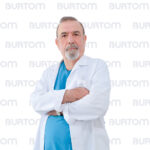Burtom ‣ Departments ‣ Anesthesiology and Reanimation
Language: 🇬🇧 English | 🇹🇷 Türkçe

Anesthesiology and Reanimation Department Overview

Anesthesiology is a medical specialty that revolves around the administration of anesthesia to patients undergoing surgical procedures. Anesthesiologists are responsible for assessing patients’ medical conditions, selecting appropriate anesthesia techniques, and monitoring their vital signs throughout surgery to ensure their comfort and safety.
On the other hand, Reanimation, also known as Critical Care or Intensive Care Medicine, is a branch of medicine dedicated to the treatment of severely ill or injured patients who often face life-threatening situations. Reanimation specialists, or intensivists, work in specialized units called intensive care units (ICUs) and provide advanced medical interventions, including mechanical ventilation, hemodynamic support, and the management of complex medical conditions. Their primary goal is to stabilize and optimize the health of critically ill patients.
Together, Anesthesiology and Reanimation play crucial roles in ensuring patient safety, comfort, and survival during both elective surgeries and emergency medical situations.
Key Functions of an Anesthesiology and Reanimation

Anesthesiology:
Anesthesia Administration: Anesthesiologists administer anesthesia to prevent or minimize pain and discomfort for patients during surgical procedures or medical interventions. This ensures that patients are unconscious and do not experience pain during surgery.
Patient Assessment: Anesthesiologists assess patients’ medical histories, current health conditions, and suitability for anesthesia. This assessment is crucial in determining the appropriate anesthesia method.
Monitoring Vital Signs: Throughout surgery and post-surgery recovery, anesthesiologists closely monitor patients’ vital signs, such as blood pressure, heart rate, and oxygen levels, to ensure patient safety.
Reanimation (Intensive Care):
Critical Patient Care: Reanimation specialists take care of patients who require intensive care due to severe illness or trauma, often facing life-threatening conditions.
Mechanical Ventilation: Reanimation specialists provide respiratory support to patients experiencing respiratory distress through mechanical ventilators.
Hemodynamic Support: They stabilize the circulatory systems of critical patients using fluid therapy, medications, and other treatment methods.
Monitoring and Surveillance: Continuous monitoring of vital signs in critical patients and adjusting treatment based on this data.
Coordination and Consultation: Reanimation specialists collaborate with surgical, neurological, cardiological, and other medical specialists to guide patient treatment.
Both disciplines play critical roles in ensuring patient health and safety, treating life-threatening conditions, and optimizing the treatment process. Anesthesiology makes surgeries feasible and safe, while Reanimation increases the chances of survival for patients with severe illnesses or injuries.
Situations within the scope of Anesthesiology and Reanimation

Anesthesiology:
Surgical Anesthesia: Administering anesthesia for various surgical procedures, such as orthopedic surgeries, abdominal surgeries, and neurosurgery.
Labor and Delivery: Providing pain relief and anesthesia during childbirth, including epidurals for laboring mothers.
Emergency Procedures: Administering anesthesia for emergency surgeries, such as appendectomies, trauma surgeries, and organ transplants.
Outpatient Procedures: Offering anesthesia for minimally invasive outpatient procedures, such as endoscopy and dental surgeries.
Pediatric Anesthesia: Providing anesthesia for children undergoing surgeries or medical interventions.
Chronic Pain Management: Administering pain management techniques, including nerve blocks and epidural injections, to alleviate chronic pain.
Reanimation (Intensive Care):
Post-Operative Care: Monitoring and managing patients recovering from surgery in the intensive care unit (ICU).
Cardiac Arrest: Providing advanced life support, including cardiopulmonary resuscitation (CPR), defibrillation, and medication administration, during cardiac arrest.
Respiratory Failure: Caring for patients requiring mechanical ventilation due to severe respiratory distress or failure.
Trauma Care: Treating patients with severe injuries from accidents, falls, or violence.
Sepsis Management: Providing care for patients with sepsis, a life-threatening infection.
Neurological Emergencies: Managing patients with acute strokes, traumatic brain injuries, or seizures.
Organ Failure: Supporting patients with organ failure, such as kidney or liver failure, using dialysis or other life-sustaining treatments.
Burn Care: Treating patients with extensive burns and managing their complex medical needs.
Pediatric Critical Care: Providing intensive care for critically ill infants and children with various medical conditions.
These situations highlight the diverse roles that Anesthesiology and Reanimation specialists play in the field of medicine, encompassing surgical support, pain management, and critical care for patients in both elective and emergency contexts.
Patient Experience in the Anesthesiology and Reanimation

Anesthesiology:
Preoperative Assessment: Before surgery, patients meet with an anesthesiologist for a preoperative assessment. During this consultation, the anesthesiologist reviews the patient’s medical history, allergies, current medications, and overall health. They discuss the type of anesthesia that will be administered and answer any questions or concerns the patient may have.
Anesthesia Administration: On the day of surgery, the patient is taken to the operating room. The anesthesiologist administers the chosen form of anesthesia, which may include general anesthesia (rendering the patient unconscious), regional anesthesia (numbing specific areas), or local anesthesia (numbing a small area). Patients typically don’t remember the surgery itself.
Monitoring: Throughout the surgical procedure, the anesthesiologist closely monitors the patient’s vital signs, ensuring that blood pressure, heart rate, oxygen levels, and other parameters remain stable.
Recovery: After surgery, the patient is taken to a recovery area where they gradually wake up from anesthesia under the supervision of healthcare professionals. Pain management is often initiated to ensure patient comfort during the recovery process.
Reanimation (Intensive Care):
Admission to the ICU: Patients requiring intensive care are typically admitted to the intensive care unit (ICU) due to severe illness, injury, or postoperative care needs.
Continuous Monitoring: In the ICU, patients are under continuous monitoring. Vital signs, such as heart rate, blood pressure, and oxygen saturation, are closely watched. Medical devices, including ventilators, may be used to assist with breathing.
Treatment: Reanimation specialists and critical care nurses provide round-the-clock care and administer treatments as needed. This may include medications, blood transfusions, or procedures to stabilize the patient’s condition.
Family Communication: Healthcare providers often maintain open communication with the patient’s family, keeping them informed about the patient’s progress and involving them in decision-making when appropriate.
Recovery and Transition: Once the patient’s condition stabilizes, they may be transferred out of the ICU to a regular hospital room or another level of care, depending on their needs.
The patient experience in Anesthesiology and Reanimation can be challenging, especially for those facing serious medical conditions or complex surgeries. Communication with healthcare providers, pain management, and the support of family and caregivers play critical roles in ensuring that patients receive the best possible care and have a positive experience throughout their medical journey.
Conclusion

In conclusion, Anesthesiology and Reanimation are two vital medical disciplines that serve distinct but interconnected roles in patient care.
Anesthesiology focuses on providing anesthesia to patients undergoing surgeries and medical procedures, ensuring their comfort and safety during these interventions. Anesthesiologists conduct thorough patient assessments, administer appropriate anesthesia methods, and monitor vital signs throughout the procedure.
Reanimation, on the other hand, specializes in critical care and intensive care medicine, catering to patients with severe illnesses, injuries, or life-threatening conditions. Reanimation specialists offer advanced medical interventions, continuous monitoring, and life support measures to stabilize and optimize the health of critically ill patients.
Both disciplines are crucial in the healthcare system, with Anesthesiology making surgeries feasible and safe, and Reanimation increasing the chances of survival and recovery for patients facing severe medical challenges. The patient experience in these fields varies greatly, but it ultimately hinges on effective communication, expert medical care, and the support of healthcare teams and loved ones to ensure the best possible outcomes for patients.
Medical Devices Used in the Emergency Department

Anesthesiology and Reanimation involve the use of various medical devices to provide anesthesia, monitor patients, and deliver critical care. Here are some of the essential medical devices used in these fields:
Anesthesiology:
Anesthesia Machine: This device delivers a precise mixture of gases and anesthetic agents to the patient. It includes controls for oxygen, nitrous oxide, and volatile anesthetics.
Ventilator: Ventilators assist with breathing during anesthesia by providing mechanical ventilation. They are also used to support patients with respiratory distress.
Anesthesia Workstation: A comprehensive system that includes monitors for vital signs, anesthetic gas delivery, and ventilation control.
Pulse Oximeter: Measures the patient’s oxygen saturation in the blood (SpO2) non-invasively.
End-Tidal CO2 Monitor: Monitors the concentration of carbon dioxide in exhaled breath to assess the patient’s ventilation.
Electrocardiogram (ECG) Monitor: Monitors the patient’s heart rate and rhythm during surgery.
Blood Pressure Monitor: Continuously measures the patient’s blood pressure throughout the procedure.
Temperature Monitor: Tracks the patient’s body temperature to prevent hypothermia or hyperthermia during surgery.
Peripheral Nerve Stimulator: Used to assess neuromuscular blockade and muscle function during anesthesia.
Reanimation (Intensive Care):
Mechanical Ventilator: Continuously delivers breaths to patients who are unable to breathe adequately on their own, often due to critical illness or injury.
Cardiac Monitor: Monitors the patient’s heart rate and rhythm continuously and provides alerts for any abnormalities.
Central Venous Catheter: Placed in large veins to monitor central venous pressure and administer medications or fluids.
Arterial Line: Monitors arterial blood pressure directly and allows for frequent blood gas sampling.
Continuous Renal Replacement Therapy (CRRT) Machine: Provides kidney support for patients with acute kidney injury.
Intracranial Pressure (ICP) Monitor: Measures pressure inside the skull for patients with severe head injuries or neurological conditions.
Pulse Oximeter: Continuously measures oxygen saturation in critical care patients.
Hemodynamic Monitoring Systems: Includes various devices to assess cardiac output, pulmonary artery pressure, and other hemodynamic parameters.
Infusion Pumps: Administer medications, fluids, and nutrition through intravenous lines.
These medical devices are integral to the practice of Anesthesiology and Reanimation, allowing healthcare providers to deliver safe and effective care while closely monitoring patients’ vital signs and physiological parameters. They play a vital role in ensuring patient well-being during surgical procedures and critical care settings.
Get a Free Second Opinion
Experienced Burtom Medical Team is Ready to Help

I consent to Burtom Health Group using my aforesaid personal data for the purposes described in this notice and understand that I can withdraw my consent at any time by sending a request to info@burtom.com.






